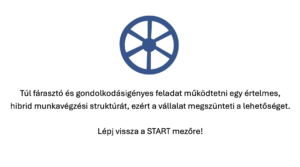For me, it says that however good these initiatives are intended they have minor impact on improving engagement. When we consider the reports of Towers Watson’s Global Workforce Survey or Gallup’s Global Workplace Survey about employee engagement, they conclude that only 11-27% of the employees are engaged at work.
On the other hand, we can see convergence in the factors that have the most to do with engaging workforce. The surveys cover many of the key factors that determine workplace engagement, including clear expectations, the ability to do what they are best at, recognition, the availability of skill-enhancing job assignments and the interest shown by their superiors in employee well-being.
If we take a closer look we must not be brain scientist to discover that all of these are management issues. It is leaders of the team who empower individuals and create the opportunity for them to excel, or not. It is supervisors who help articulate a compelling and relevant vision. It is managers who demonstrate praise-worthy values, or not.
To be honest these data have been available for years now, and we can’t find anything like company kinder garden, colorful meeting rooms or fruits for free among the main motivating factors. Do not misunderstand it, all of these ideas are good and can be meaningful to decrease the risk of voluntary leave, but unfortunately, they leave the fundamental issue unresolved. There’s no way to sugarcoat that the data represents a stinging case against management-as-usual.
In a world where we wake up almost every morning asking “what’s new, what’s exciting” success depends largely on a company’s ability to unleash the initiative, imagination and passion of its employees. This can only happen if all your people connect their heart and soul to their work, their company.
However, it does not mean that you need superstars in each position. To my experience the recipe looks as follows: You need submissive people who execute whatever is requested from them. You also need diligent ones, who work hard, who stay till the job is done and take personal responsibility to deliver results. Every business wants competent employees who have brilliant skills, who are well trained and eager to learn more. Trouble is, submission, diligence and competence are becoming commodities. You can buy these human capabilities about anywhere in the world, e.g. in India or China. If these three factors are the only things you get from your employees, your company will ultimately lose.
You also have to stir three more ingredients into your organization’s capabilities. You need initiative, employees who jump into action whenever they see a problem or an opportunity, who aren’t bound by job description and are instinctively proactive. You also need imagination. Employees who are eager to challenge the status quo and are always hunting for new ideas. Finally, you need passion. Employees who see their work as a calling, as a way to make positive difference. While other employees are merely present, they are engaged.
Problem is, the human profiles that matter most in today’s economy are precisely those that are the most difficult to manage. These higher orders of human capabilities cannot be commanded. You can’t tell someone to be passionate or creative. Well, you can, of course, but it won’t do much good. 
Well, you may say that you’d love to create a highly engaging work environment, but the folks working for you do not create fascinating products. They answer phones in a service center, mine minerals, or deliver packages. How can you expect people to be engaged in their work if their work isn’t engaging? A lot of jobs are a kind of crappy.
Actually no. 86% of the employees in the Towers Watson survey said they loved or liked their job. So why not more engagement, then?
Managers’ primary task was to ensure that employees serve the organization’s goals – submissively, diligently and expertly. Now we need to turn the approach of “organization first and human beings second” on its head. To put it bluntly, the most important task for any manager today is to create a work environment that inspires exceptional contribution and that triggers the spring of passion, imagination and initiative.
My conclusion is, if we’re going to improve engagement we have to start by admitting that if employees aren’t as enthusiastic, impassioned, and motivated as they could be, it’s not because work sucks, it’s because management blows. Given this, team leaders need to shift their focus from managing to unleashing. They can do this by helping their people use their strengths every day at work. They are in the key role to turn team members’ talents to performance. They are in charge to catalyze the process between the employee’s strength and productivity.
Although, having better managers would increase the chances of retaining our workforce longer, when I talk to clients I am sad to see that developing managers is not in the focus of many HR agenda. They say that maybe next year. Or maybe not.
Act2Manage Application
An interactive, gamification-based, practice-oriented leadership development application that provides immediate help and enables follow-up to the most common dilemmas.






